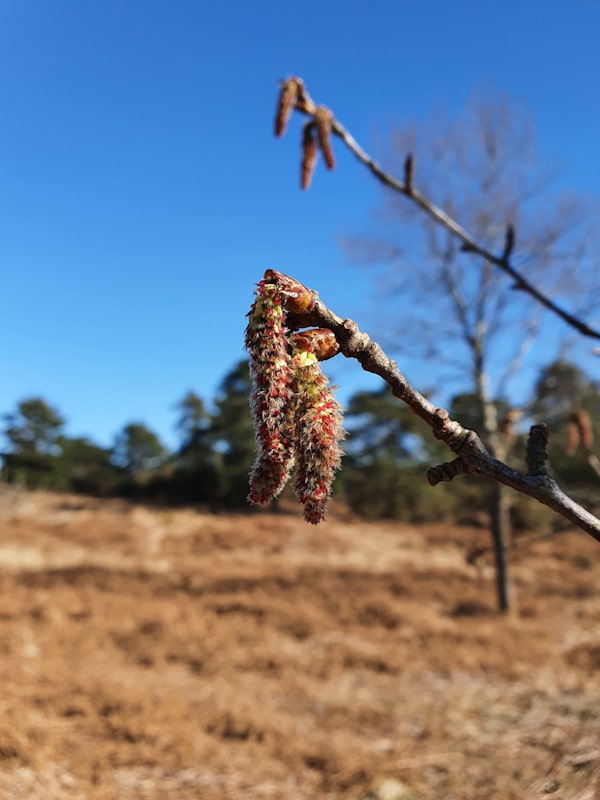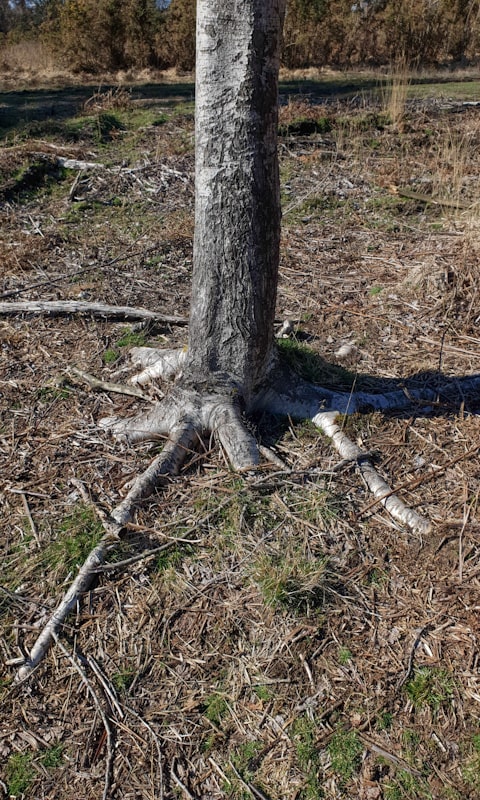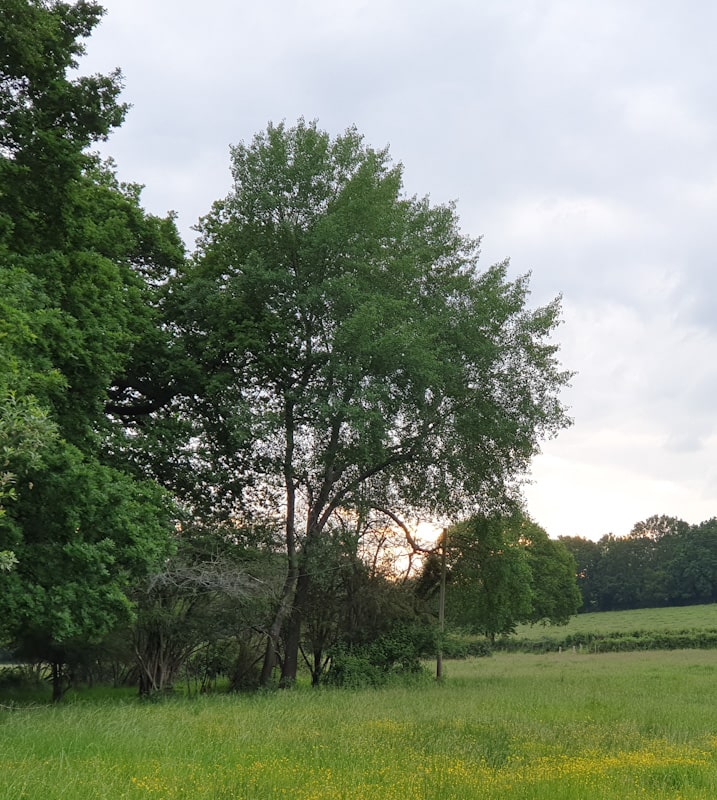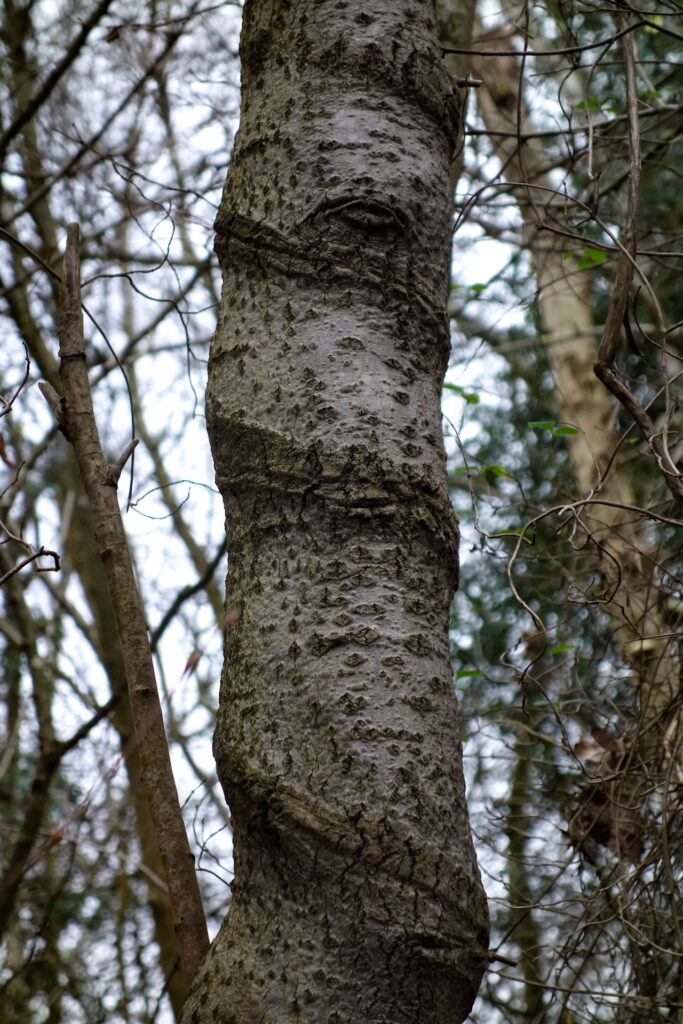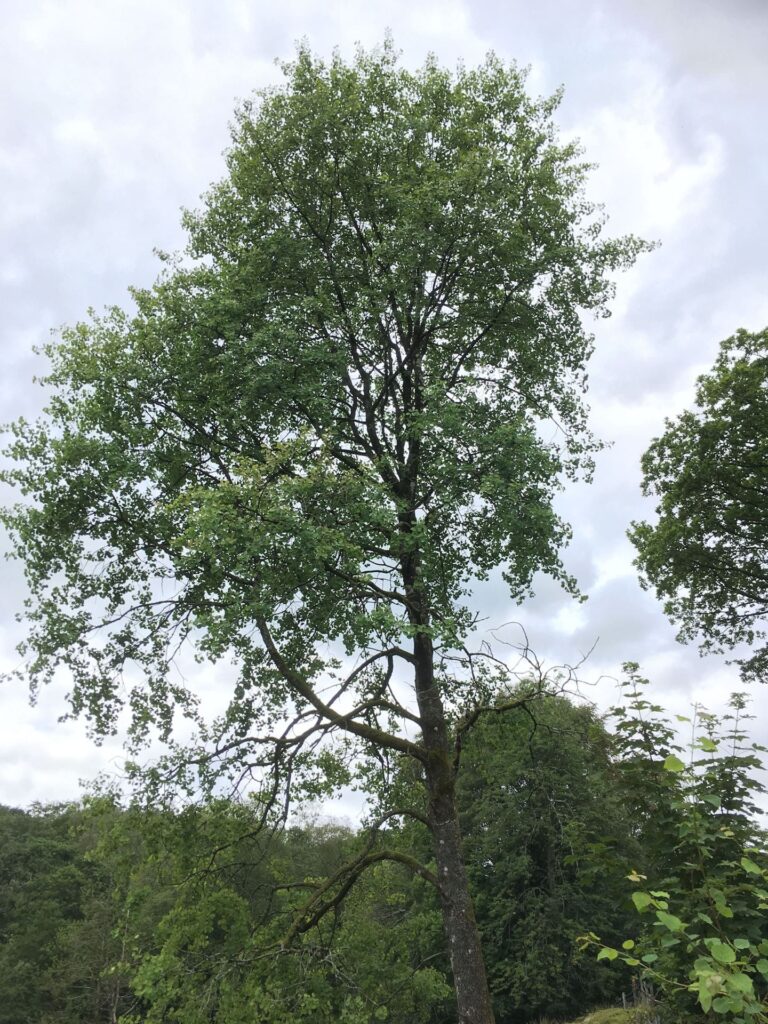Populus tremula (Aspen)
The aspen, one of the smallest of the poplars, but one of the longest lived.

The aspen is a remarkable tree for a number of reasons. It is one of only two species of poplar (Populus) native to the UK. It is found all across the UK, but is most commonly found in the west highlands of Scotland. Its geographical distribution is huge and is one of the most widely distributed trees in the world. It grows from Iceland, right across temperate and boreal regions of Europe and Asia, as far East as Kamchatka and as far north as within the Arctic Circle in Scandinavia and northern Russia.
Like other poplars, the aspen is dioecious, meaning that trees are either male or female. Aspen mainly grows through suckers rather than through setting seed. It sends up prolific suckers, sometimes at considerable distance from the main tree. This has enabled aspen to quickly colonise areas and create large groves of individual clonal trees. An example of this is in the United States, where a closely related species, Populus tremuloides, has create a clonal colony from one tree covering over 106 acres, consisting of over 40,000 stems. This clonal population has been named Pando, but has been facing pressures from over-grazing in recent years, leading to the decline of the grove in certain areas. Conservation efforts are being introduced to keep grazing animals away from suckers to allow natural regeneration of the grove to take place.
Examples of clonal populations exist in the UK and are quite common, but not quite to the same scale as Pando. Aspen is easily identified by its trembling or fluttering leaves in summer. This makes a distinctive sound, like waves crashing on the beach, and means you often hear the tree before you see it. Reasons for the trembling leaves are that the leaf petioles are long and flatteneed allowing the leaf to have more motion than in other trees. It’s not fully understood why the tree has adapted in this way, but there are theories as to why. One theory is that the movement of the leaves is meant to increase gaseous exchange, making the tree more efficient for photosynthesis. Another theory is that it allows more light to penetrate into the foliage, also increasing photosynthesis.
Aspens also tend to have great autumn colour, often changing to bright shades of yellow, and sometimes fiery oranges and reds.
